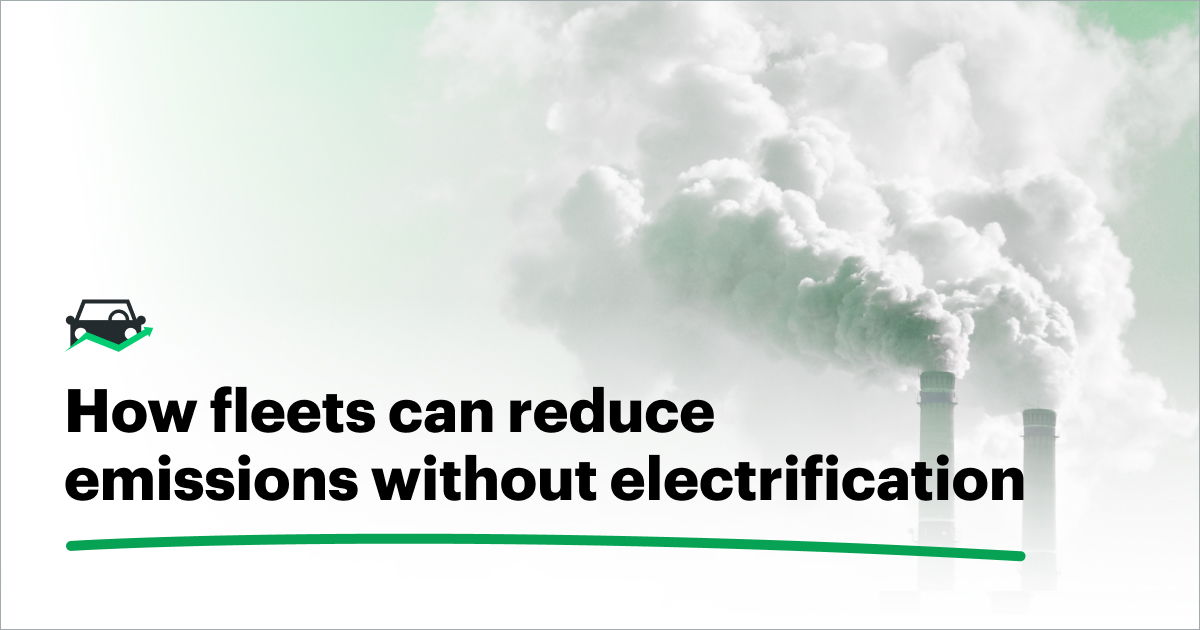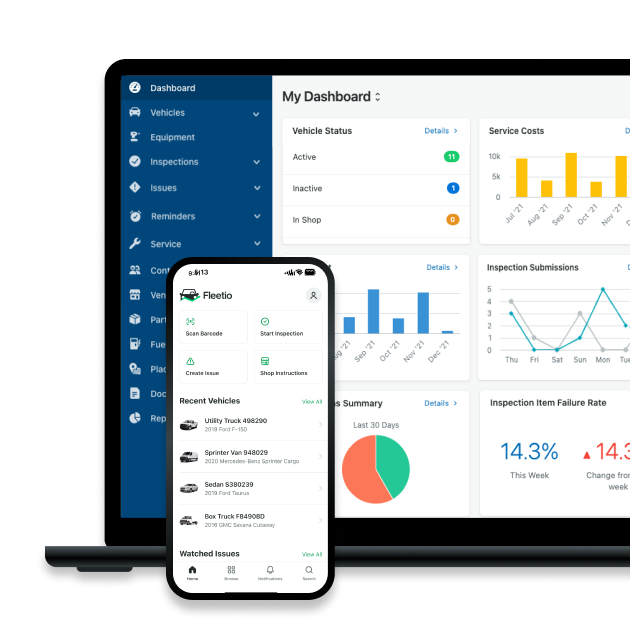Adapt to Upcoming Emissions Regulations Without Going Full Electric
Jan 18, 2023
4 min read
Over the past three years, the United States Environmental Protection Agency (EPA) has proposed new, stricter regulations to reduce greenhouse gas (GHG), smog, soot and other air pollutants associated with passenger and commercial vehicles. While state regulations vary, California is quickly becoming the poster child for the tightest regulations in the country. Fleets unable to invest in electric vehicles (EVs) can still work toward meeting these low- and zero-emissions regulatory goals.

Proposals, Regulations and Obstacles
Back in June 2020, California proposed the Advanced Clean Truck standard with the goal of improving zero-emissions vehicle (ZEV) adoption. “Beginning in 2024, three percent of Class 2 and 3, seven percent of Class 4 through 8 trucks, and three percent of Class 7 and 8 tractors purchased in California must be ZEVs,” according to a report from Fleet Owner magazine. “By 2030, half of Classes 4-6 and 30 percent of Classes 7 and 8 sales must be ZEVs. By 2045, all new vehicles sold in the state would require they be ZEVs.”
This is not only an extremely ambitious goal, it’s not easy for all fleets to meet. And with more states looking at California’s plans to supplement emissions regulation set forth at the federal level, these stringent regulations could start affecting fleets country wide. “As part of the continued efforts to reduce GHG emissions, California Air Resources Board (CARB) is looking to also monitor vehicle emissions output after the initial sales of the equipment. This will require fleets to become more involved in monitoring and reporting vehicle emissions periodically to ensure continued compliance.” This moves the burden from OEMs to fleet owners.
Current economic issues are already working against fleets when it comes to EV adoption — the price, the lead times, a shortage in needed supplies. So what can fleets do when EVs are just out of reach at the same time regulations are becoming constrictive?
Emissions Measurement Methodology
Renewable natural gas (RNG) is an adequate substitute for (or stepping stone to) fleet electrification, but before we get into why, it’s necessary to understand how carbon intensity (CI) measurements have evolved. Where once the focus of GHG reduction was centered on tailpipe emissions (tank-to-wheel), it now includes emissions from the actual production, distribution and use of the energy source, whether fossil fuel, electricity or RNG. This is considered a well-to-wheel methodology and provides “a holistic approach to account for the full emissions profile of a vehicle technology or fuel,” according to ACT News. “A CI value, expressed as a number, helps measure and convey the total ‘well-to-wheels’ emissions associated with each fuel. For instance, because RNG comes from renewable, organic waste sources it is considered a more sustainable substitute for conventional, or fossil, natural gas and can have a low, or even negative, CI value.”
Using well-to-wheel emissions accounting gives fleets a little more flexibility in asset procurement and use, as fleets can use CI-negative RNG to offset heavy emissions emitters. “Each source of RNG is associated with different levels of GHG emissions,” ACT News explains. “Certain sources of RNG, like dairy waste, are considered carbon negative because the fuel source captures emissions that would be produced in greater volumes than emissions from its use. Because of this, fleets using negative-CI value RNG as a fuel are considered to be ‘carbon negative’.”
Improve fuel management and reduce related costs with Fleetio
Start your free trialEnergy Source Pros and Cons
While both switching to RNG and/or adopting EVs can help fleets reach emission reduction goals, there are also drawbacks to each. The good thing about RNG is that it functions the same as conventional gas, meaning there is no need to make alterations to vehicles or buy new assets in order to use this type of fuel. Unfortunately, RNG is more costly and less accessible than conventional gas. On the other hand, fleet electrification comes with a lot of up-front costs, including asset capital and charging infrastructure implementation, but saves on fuel and maintenance costs over an asset’s lifecycle.
One method fleets can use to get a better idea of which alternative fuel source will be most beneficial — before EVs are the only option — is to use a fuel management system to assess current, lifetime and projected fuel transition costs. Fleet management software (FMS) with a fuel tracking system and fleet cost tracking feature provides in-depth cost reporting on fuel use and related expenses and offers detailed insights into an asset’s total cost of ownership (TCO). This allows managers and stakeholders to easily view the costs of fleet operations and surface fuel expense and use data.
By using asset TCO and honing in on historical fuel data, fleets can create a projected cost evaluation model for switching to either RNG or EVs to find out which alternative fuel is more cost effective in both the short and long term, including what cost and savings projections are for making the switch.
Get fuel management software and fleet expense tracking software all in one solution with Fleetio! Start your free trial or request a personalized demo today. Still on the fence about EV adoption? Check out our Tips for Adapting to an Electrified Fleet.

Senior Fleet Content Specialist
As a Senior Fleet Content Specialist at Fleetio, Rachael Plant uses her near decade of industry experience to craft practical content aimed at helping fleet professionals tackle everyday challenges with confidence.
LinkedIn|View articles by Rachael PlantReady to get started?
Join thousands of satisfied customers using Fleetio
Questions? Call us at 1-800-975-5304
